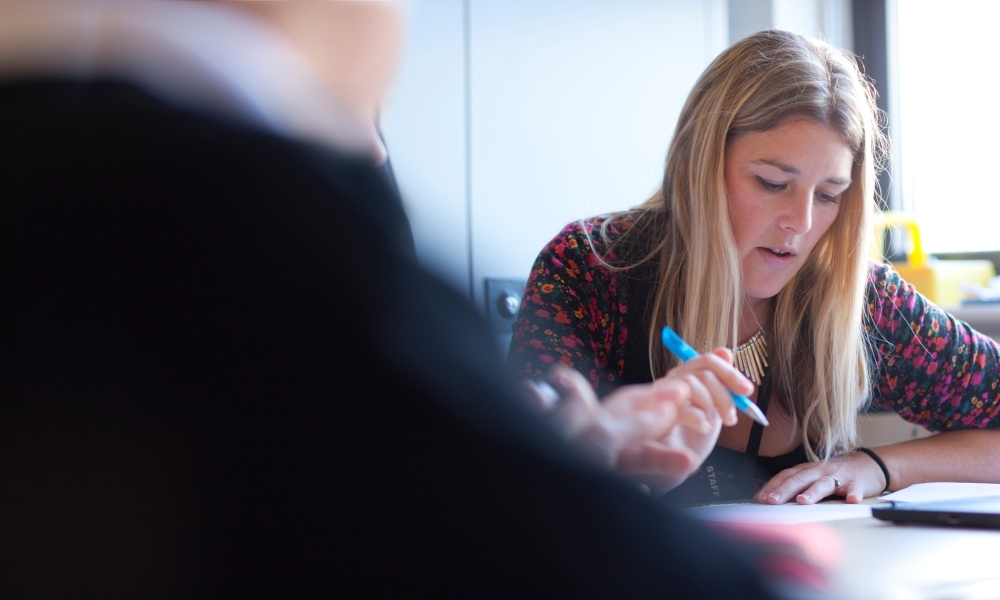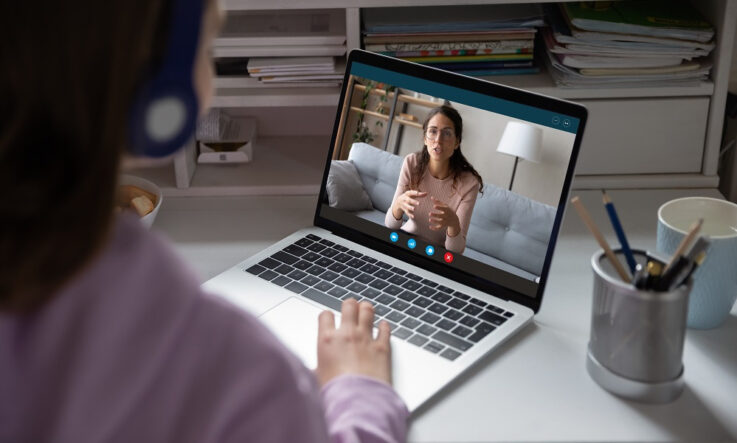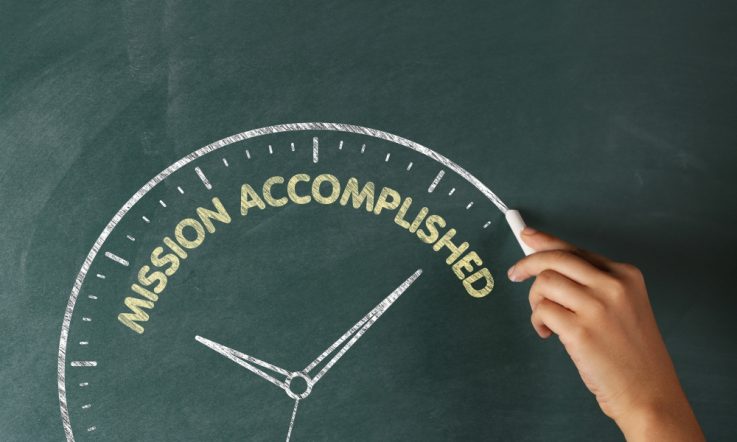In Australia, the Learning Specialist role was included in the Victorian Government School’s Agreement as a promotion position commencing in 2018. The introduction of this new, multifaceted position presented a challenge, as principals, school leaders, teachers (and Learning Specialists themselves) made sense of where this new piece of the puzzle fit.
The aim of the role is to build excellence in learning and teaching by facilitating in-school professional learning to improve teacher effectiveness. Learning Specialists remain mostly attached to their classroom-based roles, with flexibility provided in how they support whole school strategies to build cultures of high performance (DET, 2017).
The role of Learning Specialist – a school example
Dandenong High School provides a differentiated learning program that responds to a highly aspirational and diverse community representing over 80 different language groups. We utilise team teaching at Years 7-9, and approximately 180 staff and 1850 students from Years 7-12 are distributed vertically across seven houses.
Each house includes a House Leader (Assistant Principal), Assistant House Leader (Leading Teacher), two Student Engagement Coordinators and a Leading Teacher or Domain Leader as part of the leadership team. Our team of seven Learning Specialists have also been allocated across the houses to support professional learning. At our school, the visioning process to contextually define the Learning Specialist role determined three key areas:
- Delivery of Professional Learning
- Curriculum Design
- ‘Other’
This ‘other’ space allows members of the Learning Specialist Team (LST) to draw on their expertise to respond to school goals and professional learning needs as evidenced through their oversight of Professional Learning Teams, collaboration with their teaching teams and support of staff members within their allocated house.
I am a member of the LST at Dandenong High School. At the beginning of 2020 we were about to begin modelling metacognitive strategies and increase opportunities for colleagues to observe our practice. Then, the deep-voiced tones of the Australian media foreshadowed the adaptive challenge schools would face – the provision of remote learning due to COVID-19. At the time, I was undertaking an action inquiry project to examine how the school’s LST could sustain and develop the provision of individualised professional learning.
This inquiry revealed that Learning Specialists provide personalised professional learning, but also motivate significant engagement with school initiatives, challenge a deficit view of the teaching profession, and act as instructional leaders who can influence organisational culture at both the school and system level.
Providing personalised professional learning
Our LST develop curriculum and provide in-school professional learning as part of our formal learning schedules. However, it is in our ‘other’ informal work where we have generated enthusiasm and captured imagination in ways that inspire sustained staff commitment to learning (Stolp & Smith, 1995). The impact of the LST’s ‘other’ work has demonstrated that when teams pursue their intrinsic motivations, and empower themselves to self-direct methods of action, they are more likely to influence sustained engagement with improvement strategies (Wilson, 2020).
My action inquiry suggested that, when trusted to autonomously respond to identified needs, the LST create a bridge between strategies deployed to achieve formal school aims and the diverse needs of staff. Understanding that staff are at highly variant points on their own developmental continuums (Dreyfus, 2004), the ability of the LST to ‘see’ through the lens of both leadership and ‘on the ground teaching’ creates a powerful opportunity to differentiate professional learning while aligning organisational expectations with the individual strengths and needs of staff.
We often act to motivate staff engagement through our role as cultural influencers and collegial peer supports, we walk with teachers to create learning environments that promote informal dialogic spaces. In these spaces, teachers talk through and co-construct strategies, test and trial practices, and reflect on their effectiveness through reciprocal relationships with us as peers, not accountability agents.
From a position of mutual respect, our team consistently sustains a commitment to creating professional learning environments that draw on a deep understanding of our peers and their individual motivations, as well as our awareness of the organisational norms and goals of system improvement measures. We do so despite the significant social and emotional work that this requires (Goodson et al., 2006; Zembylas, 2010), and we frequently express gratitude for the collegial solidarity of our team, which has become a deeply rewarding source of motivational energy.
Motivating engagement and building on strengths
The teaching profession has long been at the mercy of deficit narratives that persistently insist we are ‘failing’; and it isn’t just the media that snipe us on a regular basis. In grappling with the impacts of a global pandemic, it is increasingly critical that we more actively push back against deficit approaches to ‘fixing the system’ and shift our focus toward identifying and building our strengths. Doing so will help sustain teachers’ energy as they work to address the impact of remote learning on students’ literacy and numeracy outcomes, and their social and emotional learning.
There is now significant evidence that appreciating the strengths and hopes of our teachers and students, while also resisting a deficit view of their capacity, can promote sustained learning and growth, and improve long-term wellbeing outcomes (Cooperrider et al., 2018; Louis & Murphy, 2018). Positive relationships, emotional intelligence and collegiality alone do not create more effective teaching. However, they do contribute to the creation of a positive climate for learning which, when combined with a focus on instructional practice conversations, leads to increased engagement with learning and powerful improvements in teacher quality (Robinson, 2008; Thompson et al., 2020).
The LST at Dandenong High School have demonstrated their capacity to help release the creative energy of staff and to breathe life, excitement and energy into professional learning environments. Doing so as a social and embedded aspect of the school’s climate and culture, rather than being ‘the servant of token incentives’ (MacBeath, 2000, p.16).
Initiatives driven by the top almost guarantee ‘resistance, minimal compliance and inefficiency’ (Dinham, 2013, p.94) and can ‘foster institutional inertia and stifle professional creativity’ (MacBeath, 2000, p.13). By acting as co-constructors and contributors of the knowledge and practices that support school aims, the LST at Dandenong High School has been able to enact a distributed leadership model to motivate and sustain staff engagement with school improvement initiatives from the ground up.
References
Cooperrider, D. L., McQuaid, M., & Godwin, L. N. (2018). A Positive Revolution in Education: Uniting Appreciative Inquiry with the Science of Human Flourishing to ‘Power Up Positive Education.’ AI Practitioner, 20(4), 3-19.
Department of Education & Training (DET), (2017) ‘Learning Specialist Guidance’, https://www.education.vic.gov.au/Documents/school/teachers/teachingresources/practice/Learning_specialist_guidance.docx
Dinham, S. (2013). The quality teaching movement in Australia encounters difficult terrain: A personal perspective. Australian Journal of Education, 57(2), 91-106. https://doi.org/10.1177/0004944113485840
Dreyfus, S. E. (2004). The Five-Stage Model of Adult Skill Acquisition. Bulletin of Science, Technology & Society, 24(3), 177–181. https://doi.org/10.1177/0270467604264992
Goodson, I., Moore, S., & Hargreaves, A. (2006). Teacher nostalgia and the sustainability of reform: The generation and degeneration of teachers’ missions, memory, and meaning. Educational Administration Quarterly, 42(1), 42-61. https://doi.org/10.1177/0013161X05278180
Louis, K. S., & Murphy, J. F. (2018). The potential of positive leadership for school improvement: A cross-disciplinary synthesis. Nordic Journal of Comparative and International Education, 2(2-3), 165-180. https://doi.org/10.7577/njcie.2790
MacBeath J. (2010) Self-Evaluation for School Improvement. In A. Hargreaves, A. Lieberman, M. Fullan, D. Hopkins (Eds.), Second International Handbook of Educational Change. Springer International Handbooks of Education, Vol 23. Springer. https://doi.org/10.1007/978-90-481-2660-6_50
Robinson, V.M.J., Lloyd, C.A., & Rowe, K.J. (2008). The Impact of Leadership on Student Outcomes: An Analysis of the Differential Effects of Leadership Types. Educational Administration Quarterly, 44(5), 635-674. https://doi.org/10.1177/0013161X08321509
Stolp, S., & Smith, S. C. (1995). Transforming School Culture: Stories, Symbols, Values & the Leader's Role. ERIC Clearinghouse on Educational Management, OR 97403-5207.
Thompson, P., Kriewaldt, J., & Redman, C. (2020). Elaborating a Model for Teacher Professional Learning to Sustain Improvement in Teaching Practice. Australian Journal of Teacher Education, 45(2), 81-103. 10.14221/ajte.2020v45n2.5
Wilson, N. (2020), Research Project Report – Researching Leadership Practice. [Unpublished Masters report]. University of Melbourne.
Zembylas, M. (2010) Teacher Emotions in the Context of Educational Reforms. In A. Hargreaves, A. Lieberman, M. Fullan, D. Hopkins (Eds.), Second International Handbook of Educational Change. Springer International Handbooks of Education, Vol 23. Springer. https://doi.org/10.1007/978-90-481-2660-6_50
One of the aspects of the work of Learning Specialists at this school, is building on the strengths of teaching staff. As a teacher, what would you identify as your own strengths? As a school leader or member of a leadership team, what are the strengths of your colleagues? How do you utilise these strengths for maximum impact?



